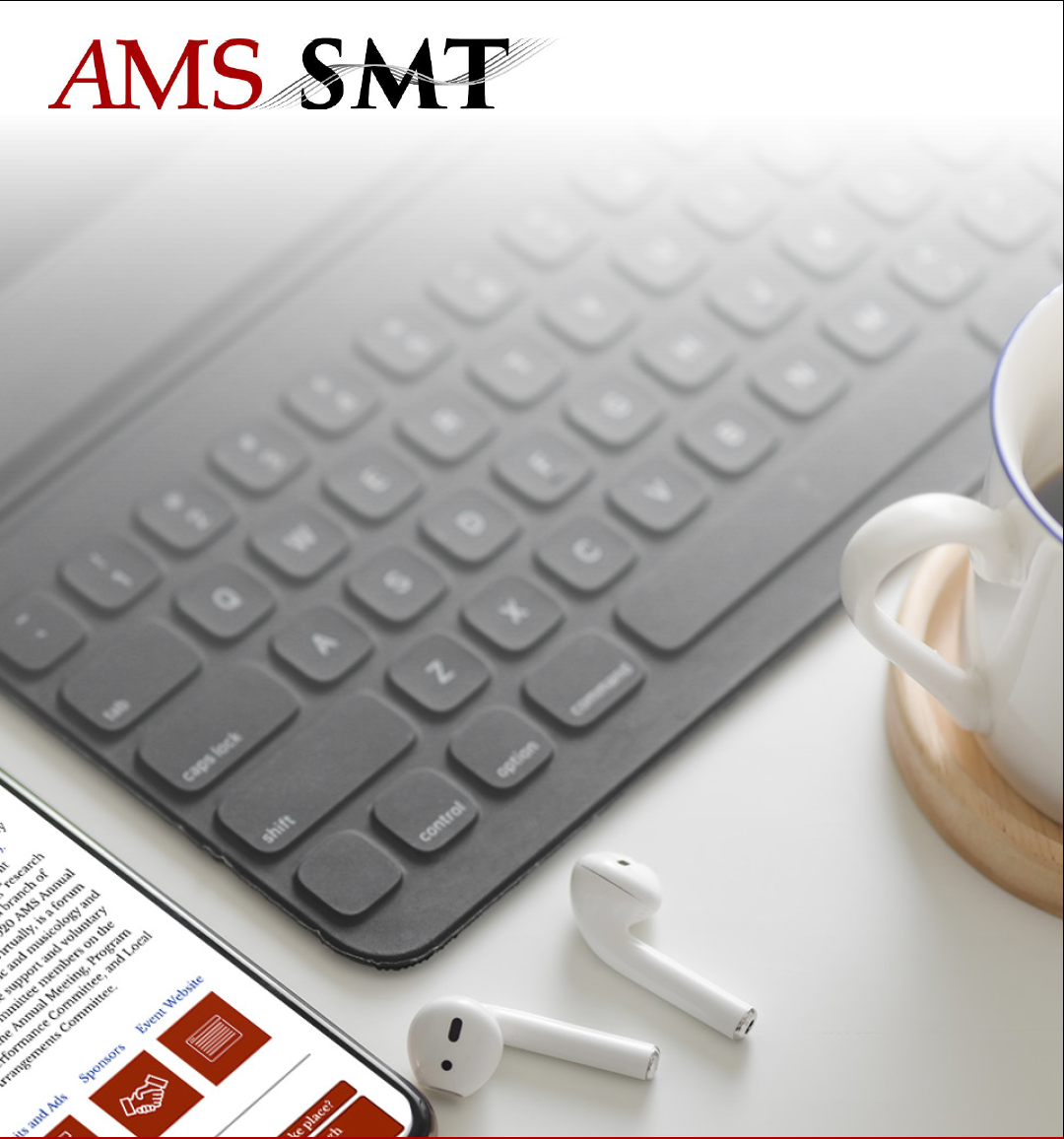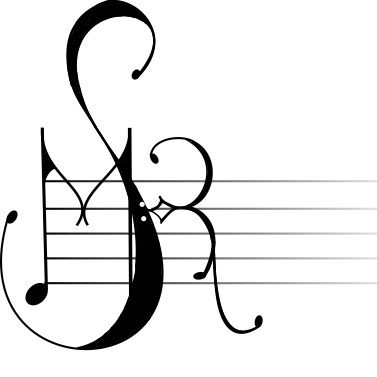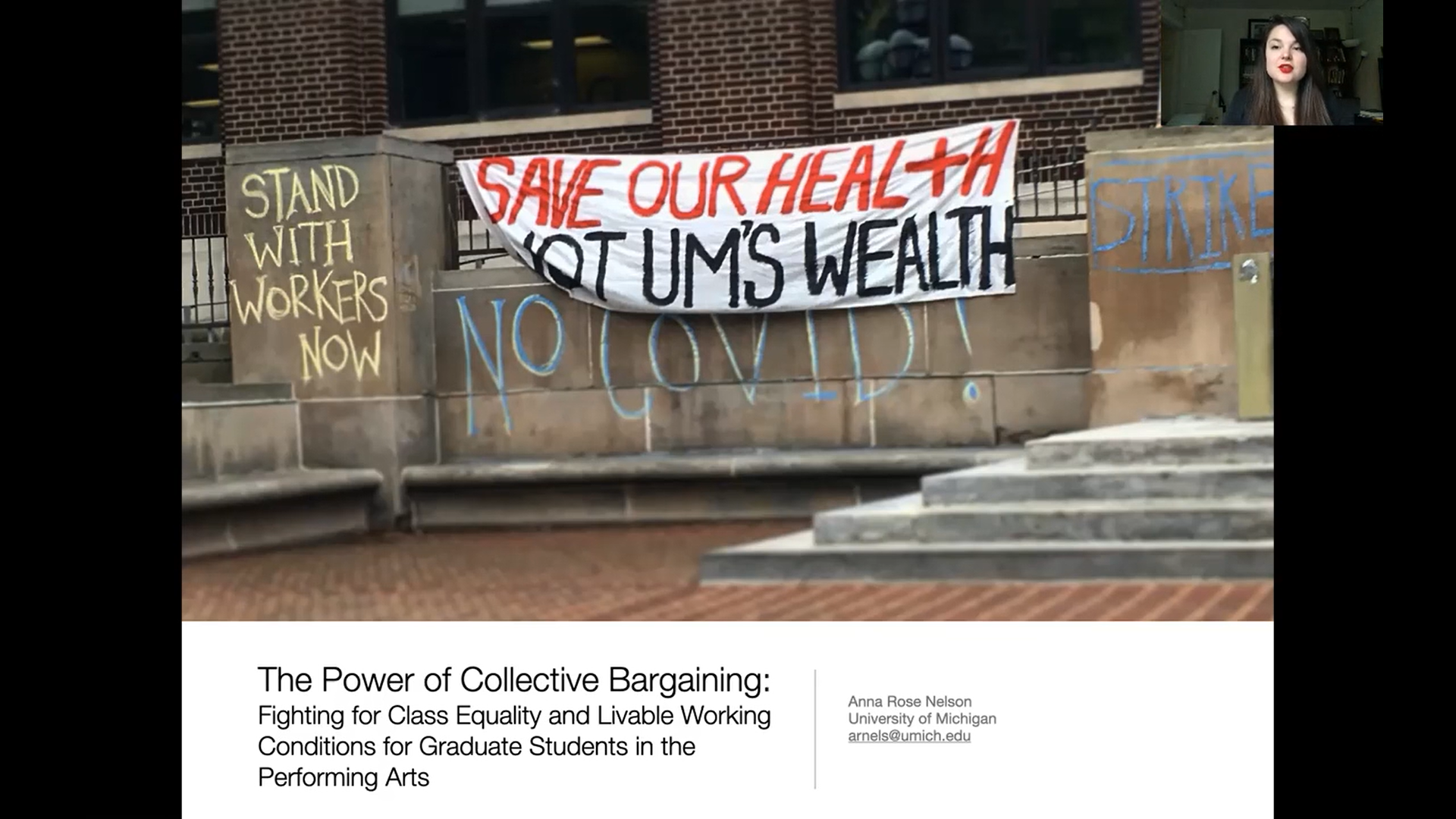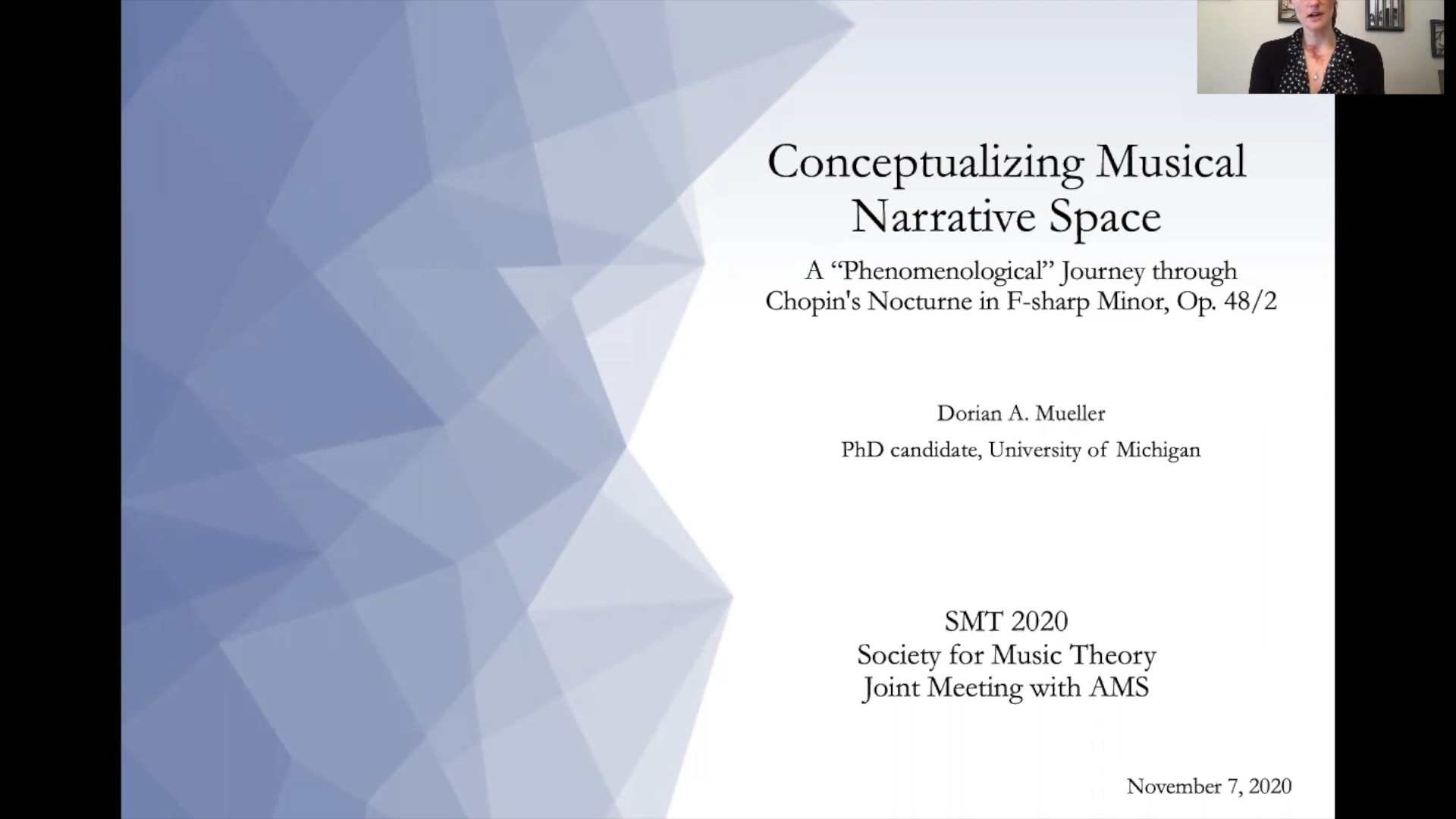
The virtually-held Society for Music Theory (SMT) conference this year was witness to three presentations by SMR members. Dorian Mueller presented on narrative space in the context of Chopin’s Nocturne in F-sharp Minor, Op. 48, No. 2 in a presentation entitled: “Conceptualizing Musical Narrative Space: A Phenomenological Journey through Chopin’s Nocturne in F-Sharp Minor, Op. 48/2.” Anna Rose Nelson, the GEO steward for the School of Music, Theatre and Dance, presented on her experiences organizing the strike held at University of Michigan in September in “The Power of Collective Bargaining: Fighting for Class Equality and Livable Working Conditions for Graduate Students in the Performing Arts.” Kája Lill presented a poster on the interrelation of complex meters using a novel analytical framework. Congratulations to all! Find abstracts for these three works below for more information.
Pictures: Click to enlarge and view captions
Conceptualizing Musical Narrative Space: A Phenomenological Journey through Chopin’s Nocturne in F-sharp Minor, Op. 48/2
Dorian Mueller
In light of the assertion that “narrative comprehension closely correlates with an understanding of the spatial organization of the storyworld” (Alber 2016), scholars in contemporary literary theory consider narrative space to be a vital component of narrativity. Yet, while studies in music and narrative have focused extensively on the features of plot, action, agency, narration, and temporality (e.g. Almén 2008; Cone 1974; Hatten 1991, 2018; Maus 1991; Newcomb 1992; Klein 2004), the construct of narrative space has yet to be comprehensively theorized.
This paper begins to fill this gap by proposing a theoretical model of musical narrative space, one that draws parallels to how readers conceptualize fictional worlds in literature through “spatial frames,” “story spaces,” “narrative (story) worlds,” and “lived spaces” (Ryan 2009; Alber 2016). I engage with these constructs alongside an adaption of David Lewin’s (1986) p-model––a tool that captures the “phenomenological” experience of listening through a mapping of musical events perceived within multiple temporal contexts––to model the path of “musical spatial frames” encountered in Chopin’s Nocturne in F-sharp Minor, op. 48/2. Through the construct of “narrative (story) worlds,” I then conceptualize the latent musical worlds activated by a listener in the course of tracing this path. As I suggest, the process of constructing musical narrative space is largely determined by salient moments in the music that draw a listener’s attention to the “here” and “now” of listening, and it is through experiencing shifting spatial perspectives that these spaces become narrativized.
N-Dimensional and Ski-hill Graphs and Complex Meters
Kája Lill
Most rhythm and meter scholarship that has addressed complex meters—meters that include quintuple and larger prime number pulse groupings—provides examinations of individual complex meters in isolation, like the work of Justin London and Godfried Toussaint. Some authors, like Fernando Benadon and Mark Gotham, have begun to consider how different complex meters relate to one another. I address how complex meters relate to on another with a novel analytical method that synthesizes Gotham’s metric relationships and Benadon’s description of tempo- (metric-) modulation into a single graphical representation of complex meters. To do this, I build on the work of Richard Cohn, Scott Murphy, and Daphne Leong on ski-hill graphs—graphic representations of simple and compound meters which import the analytical possibilities of the tonnetz to the metrical realm—by expanding them from 2- to n-dimensions. N-dimensional ski-hill graphs are ideally suited for analyzing repertoire comprising changing complex meters and especially cases of tempo-modulation by providing succinct graphic representations of these meters and highlighting relationships that otherwise remain opaque. This poster first shows how I generalize Cohn’s 2-dimensional ski-hill graphs, which feature subdivision by two or three, to account for subdivision by prime numbers larger than two or three. It then shows that by expanding ski-hill graphs into n-dimensions they can account for any number of prime number subdivisions. I provide analyses of complex meters utilizing 2-, 3-, and 4-dimensional ski-hill graphs respectively in Gustav Holst’s “Mars, The Bringer of War,” Elliot Carter’s Cello Sonata, and Leoš Janáček’s “Fanfare” from his Sinfonietta.
The Power of Collective Bargaining: Fighting for Class Equality and Livable Working Conditions for Graduate Students in the Performing Arts
Anna Rose Nelson
Graduate students face a long and difficult path to stable employment, but this path need not include living in poverty, insecurity, and fear. Unfortunately, unstable power dynamics and issues of diversity and inclusion continue to underlie and underscore compliance with this narrative of suffering. Through the lenses of racial and class inequality, tropes about low wages, starvation, and doubts about the value of students and their work are seen to strike a painful chord for many—especially those disproportionately affected by the strains of higher education.
In this talk, I seek to illuminate these issues by sharing my experience as a union organizer at the University of Michigan, focusing on the Graduate Employees’ Organization (GEO) strike for a safe and just pandemic response and an ongoing campaign toward equitable pay for graduate employees at the School of Music, Theatre & Dance (SMTD). I detail the fight for parity at SMTD, describing past conversations with administration, recent attempts to alter GEO contract language, and plans to continue to pursue equality for performing artists. Finally, I consider the unjust power dynamic causing the mistreatment of contingent employees by describing our strike demands and the obstacles encountered while seeking a safe environment for teaching, learning, and growing.
My work with GEO has taught me valuable lessons about allyship and intersections of race, ethnicity, and class in academia, and that many of the issues facing academics today can be distilled into one simple truth: the risks of pursuing a terminal degree vary greatly based on personal identity.
Recent Posts
SMR to Host Midwest Graduate Music Consortium 2025 Conference – January 13, 2025
SMR Welcome BBQ at County Farm Park – October 01, 2024
Julian Grey defends dissertation – June 05, 2024
Michaela Franzen defends dissertation – May 21, 2024
Kai West defends dissertation – May 16, 2024
Micah Mooney and Carlos Pérez Tabares present at Music Theory Midwest – May 12, 2024
SMR end-of-year round-up at County Farm Park – April 25, 2024
SMR hosts Research Showcase – September 29, 2023
 Society for Music Research
Society for Music Research

